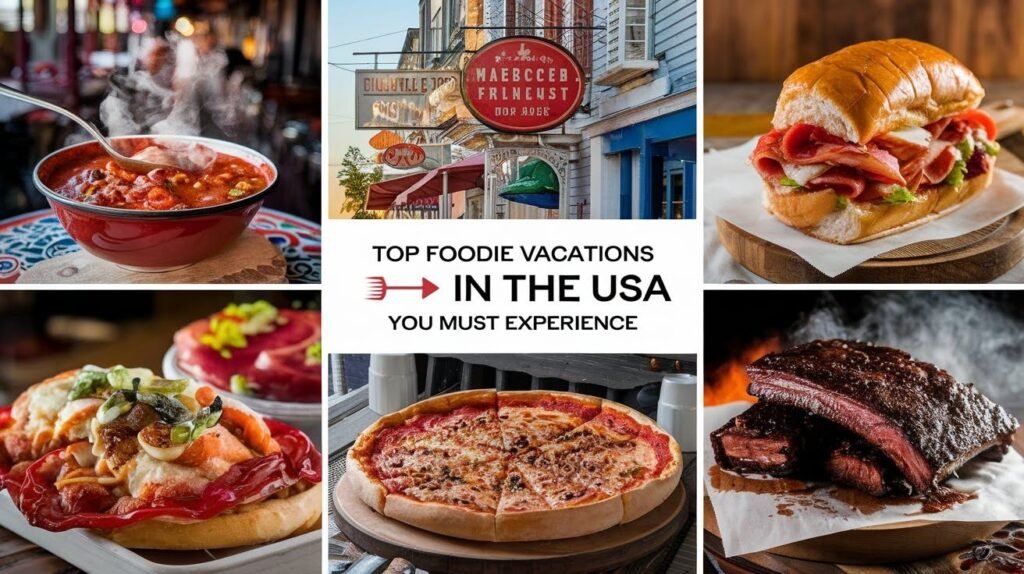Have you ever tasted a dish so amazing that it made you want to pack your bags and visit where it came from? Food travel is becoming one of the hottest vacation trends, with millions of people planning trips around their taste buds.
When you eat local food, you’re not just filling your stomach. You’re learning about history, traditions, and the heart of a community. Every bite tells a story about the people who live there.
As someone who has spent years researching American food culture and visiting top culinary destinations, I can tell you the United States offers some of the world’s best food experiences. From spicy Cajun dishes in New Orleans to fresh seafood in Maine, American cities serve up authentic flavors that will make your vacation unforgettable.
What Makes a Great Foodie Vacation Destination?
The best food destinations combine authentic local flavors with unique dining experiences that you can’t find anywhere else.
Authentic Local Cuisine and Traditional Cooking Methods
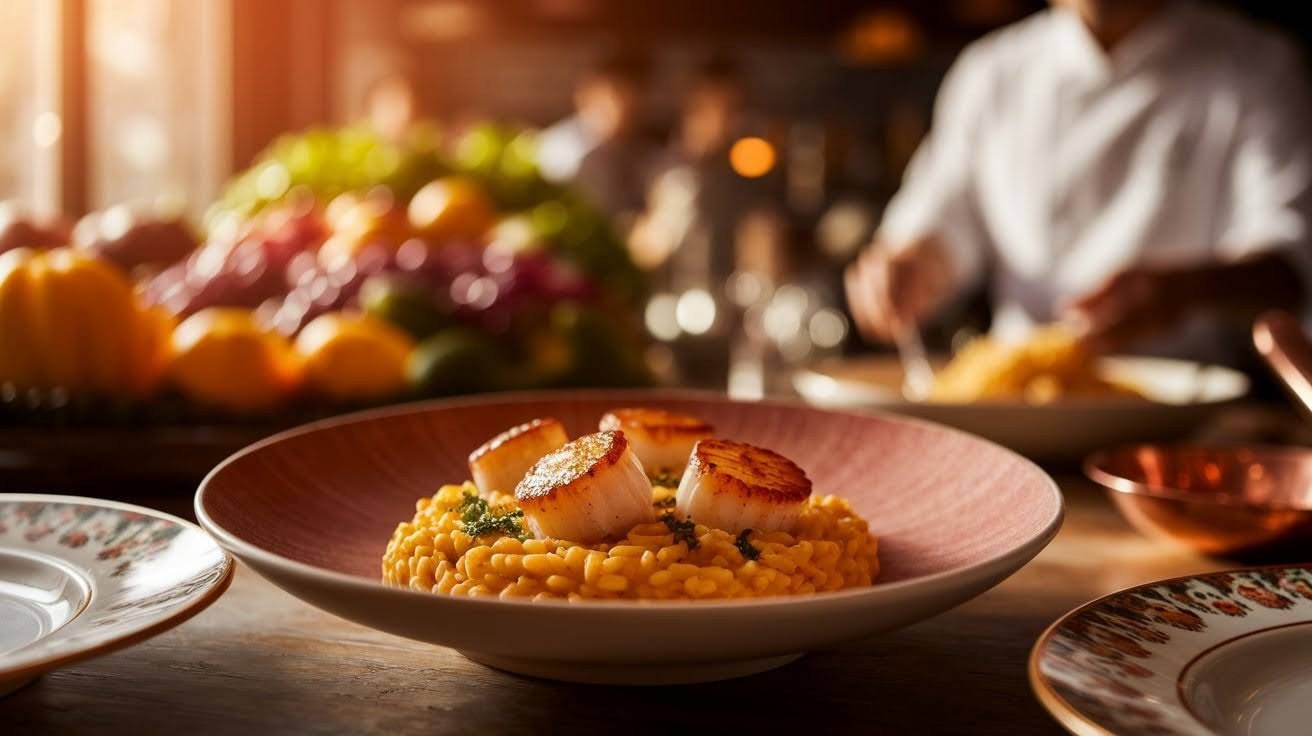
Great foodie spots serve dishes that have been passed down through generations. These places use recipes that local families have cooked for decades or even centuries.
You can taste the difference when restaurants use traditional cooking methods. Wood-fired ovens, slow-braised meats, and hand-rolled pasta create flavors that modern shortcuts simply can’t match.
Access to Fresh, Regional Ingredients and Seasonal Specialties
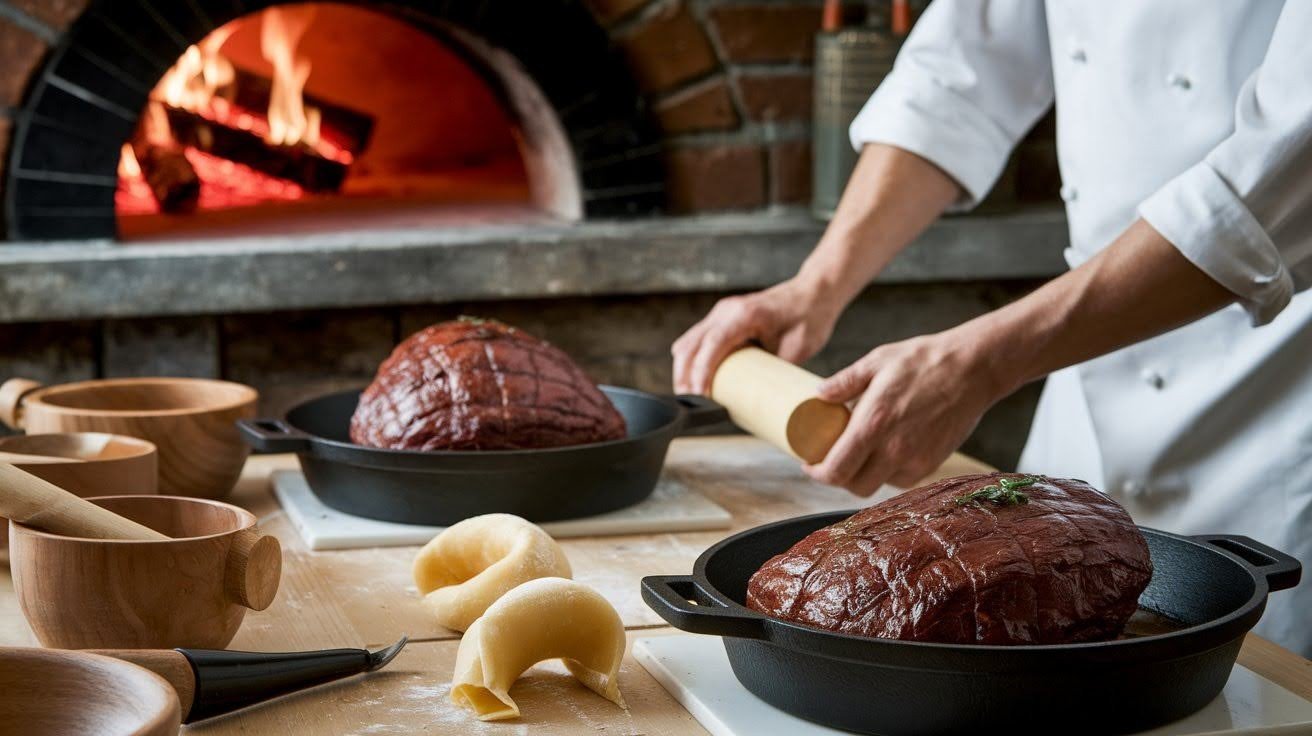
The best food cities are located near farms, oceans, or other fresh ingredient sources. This means restaurants can serve food that was caught or picked just hours before reaching your plate.
Seasonal menus show off what grows best in each area throughout the year. Spring asparagus, summer tomatoes, and fall apples all taste better when they’re grown locally and eaten at the right time.
Diverse Dining Options from Street Food to Fine Dining
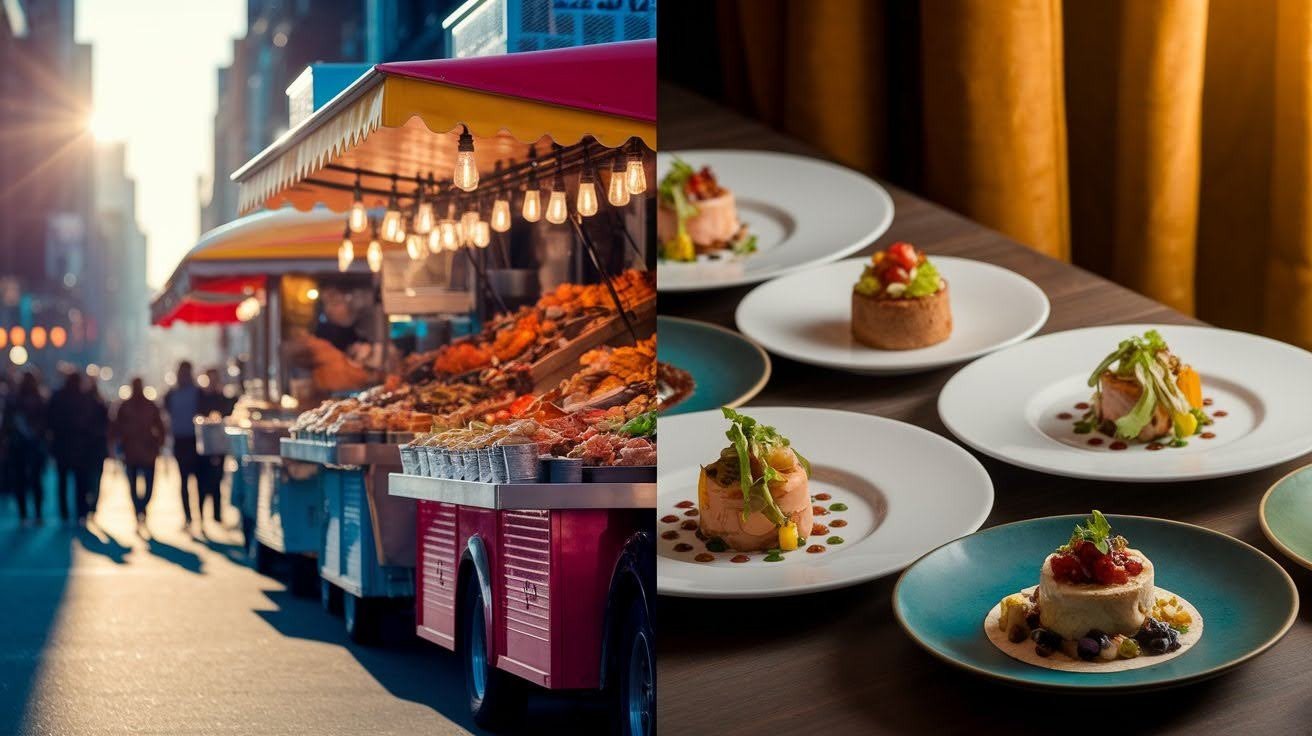
Top foodie destinations offer food at every price point and style. You might grab a $3 taco from a food truck for lunch and enjoy a $100 tasting menu for dinner.
This variety lets you experience different sides of the local food scene. Street vendors often serve the most authentic local dishes, while upscale restaurants put creative twists on traditional flavors.
Cultural Immersion through Food Markets, Cooking Classes, and Food Tours
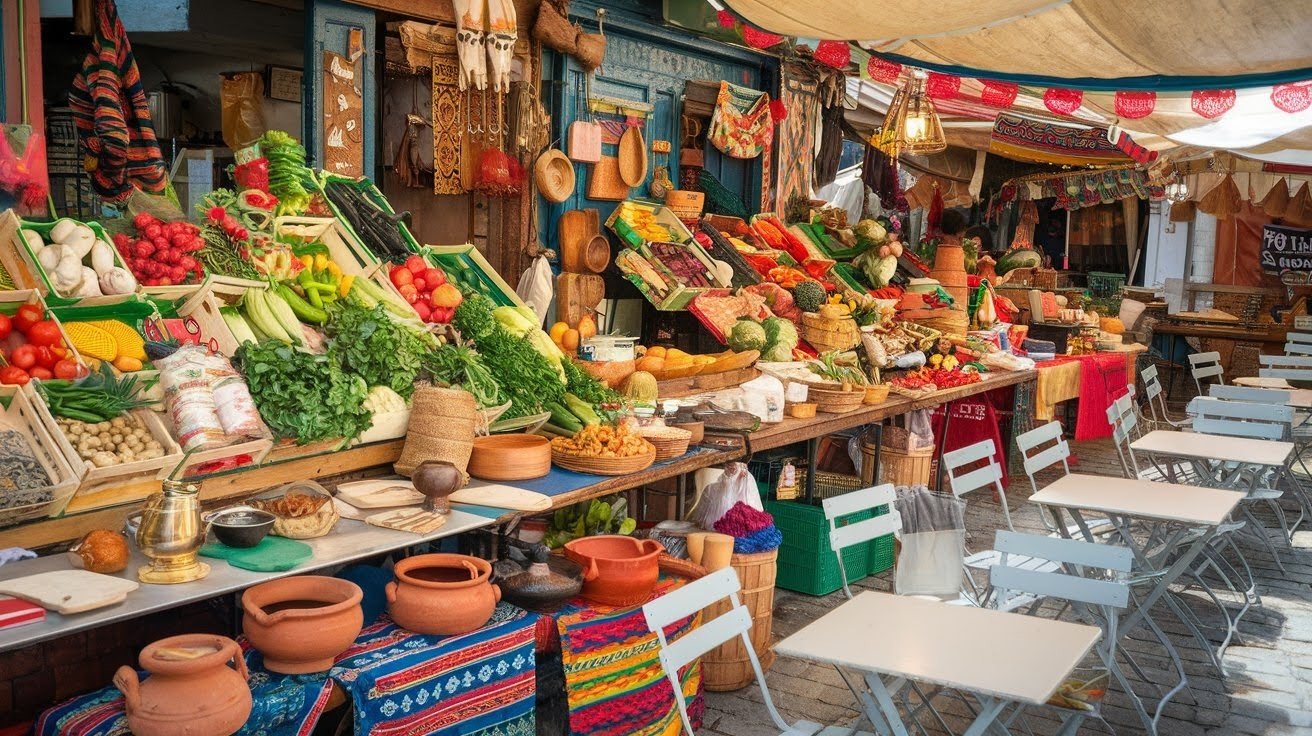
The best food trips go beyond just eating at restaurants. Visiting local markets, taking cooking classes, and joining food tours help you understand why certain dishes are important to the community.
These experiences let you meet local chefs, farmers, and food lovers who can share stories about their favorite dishes. You’ll learn cooking techniques and find ingredients you can take home with you.
Detailed Destination Analysis
The food scene combines influences from around the world with local ingredients and regional traditions to create unique dining experiences.
Must-Visit Southern Food Destinations
New Orleans’ Unique Creole and Cajun Culture: New Orleans mixes French, Spanish, African, and Native American cooking styles into something completely original. The city’s famous dishes like gumbo, jambalaya, and beignets can’t be found anywhere else in quite the same way.
You can eat your way through the French Quarter, visit century-old restaurants, and try local specialties at neighborhood joints. Don’t miss the po’ boy sandwiches, fresh oysters, and strong coffee that fuel this musical city.
Charleston’s Low Country Cooking Traditions: Charleston serves up Southern comfort food with a sophisticated twist. The city’s chefs use fresh seafood, locally grown rice, and traditional techniques to create dishes that honor the area’s history.
Shrimp and grits, she-crab soup, and barbecue represent just a few of Charleston’s specialties. The city’s restaurant scene balances historic recipes with modern creativity, making every meal feel both familiar and surprising.
Coastal Seafood Experiences
Maine’s Fresh Lobster and Maritime Heritage: Maine offers the freshest lobster you’ll ever taste, served in settings ranging from casual lobster shacks to upscale restaurants. The state’s rocky coastline produces sweet, tender lobster that’s become famous worldwide.
Beyond lobster, Maine serves excellent clams, scallops, and fish that reflect the state’s deep connection to the ocean. Local restaurants often get their seafood directly from fishing boats, ensuring maximum freshness and flavor.
Pacific Northwest’s Farm-to-Table Movement: Seattle and Portland lead the country in farm-to-table dining, with restaurants that change their menus based on what’s growing nearby. The region’s mild, wet climate produces incredible vegetables, fruits, and herbs year-round.
Local chefs work closely with farmers and fishermen to serve the absolute freshest ingredients. You’ll find amazing salmon, craft beer, coffee, and innovative dishes that showcase the area’s natural bounty.
Regional American Specialties
Texas BBQ and Southwestern Flavors: Texas takes barbecue seriously, with different regions specializing in various cuts of meat and cooking styles. Austin, Dallas, and Houston each offer their BBQ traditions alongside modern Tex-Mex cuisine.
The state’s size and diversity mean you can find everything from authentic Mexican food near the border to German-influenced dishes in central Texas. Local ingredients like jalapenos, pecans, and beef create flavors that define Southwestern cooking.
Midwest Comfort Food and Craft Beer: Cities like Chicago, Milwaukee, and Kansas City serve hearty comfort foods that reflect the region’s agricultural heritage. Deep-dish pizza, cheese curds, and barbecue represent just a few Midwestern specialties.
The Midwest has also become a craft beer capital, with local breweries creating unique beers that pair perfectly with regional dishes. Many restaurants now offer beer and food pairings that highlight both the brewing and cooking traditions of the area.
Planning Your Culinary Travel Experience
Smart planning helps you make the most of your foodie vacation and ensures you don’t miss out on must-try experiences.
Pre-Trip Research and Reservations
Booking Popular Restaurants and Cooking Classes in Advance: The best restaurants and cooking classes fill up quickly, especially during peak travel seasons. Make reservations at least a month ahead for popular spots, and even earlier for special dining experiences.
Research local food events and festivals that might be happening during your visit. These events often feature multiple restaurants and chefs in one location, giving you a chance to try many different foods in a short time.
Finding Food Tours and Market Experiences: Food tours provide insider knowledge about local dining scenes and take you to places you might not find on your own. Many tours include behind-the-scenes access to kitchens, markets, or production facilities.
Local food markets offer chances to interact with farmers, bakers, and other food producers while sampling fresh ingredients. Visit markets early in the morning when selection is best and vendors have time to chat about their products.
Making the Most of Your Food Experience
Balancing Fine Dining with Street Food Experiences: Don’t spend all your food budget on expensive restaurants. Some of the best local flavors come from food trucks, market stalls, and casual neighborhood spots that locals frequent.
Mix high-end dining experiences with more casual meals to get a complete picture of the local food scene. Street food often represents the most authentic local flavors and costs much less than restaurant meals.
Learning About Local Ingredients and Cooking Techniques: Ask servers and chefs about ingredients and preparation methods you’re unfamiliar with. Most food professionals love sharing knowledge about their craft and local specialties.
Visit local grocery stores and specialty food shops to see what ingredients are available in the area. You might find items to take home or learn about foods that are important to the local diet.
Budget Considerations
Range of Dining Options from Budget-Friendly to Luxury: Good food destinations offer delicious meals at every price point. Set aside money for one or two special dining experiences, but don’t ignore cheaper options that might surprise you.
Happy hour specials, lunch menus, and early bird dinners can help you experience upscale restaurants at lower prices. Many cities also have food halls where multiple vendors offer high-quality meals at reasonable costs.
Value of Food Tours and Cooking Classes: While food tours and cooking classes cost more than regular meals, they provide experiences and knowledge you can’t get elsewhere. These activities often include multiple tastings and behind-the-scenes access.
Consider these experiences as entertainment and education, not just meals. The stories, techniques, and connections you make often prove more valuable than the food itself, creating memories that last long after your trip ends.
Conclusion
Food travel creates connections between people, places, and cultures that regular tourism simply cannot match. When you share a meal with locals or learn to cook traditional dishes, you gain insights into what makes each community special.
Based on my extensive research and firsthand experience visiting America’s top food destinations, I can confidently say the United States offers incredible culinary experiences in every region.
From Southern comfort food to Pacific Northwest innovations, American cities serve up authentic flavors that reflect their unique histories.
Your taste preferences should guide your destination choices. Love spicy food? Head to New Orleans or Austin. Prefer fresh seafood? Try Maine or Seattle. Each region offers something different for curious food lovers who want to taste America’s diverse culinary landscape.
Frequently Asked Questions
What’s the best time to visit foodie destinations in the USA?
Spring and fall offer the best weather and seasonal ingredients. Summer brings festivals but crowds, while winter may limit some outdoor dining experiences.
How much should I budget for a foodie vacation?
Plan $100-150 per day for meals, including a mix of casual and upscale dining. Add extra for cooking classes, food tours, and special experiences.
Are food tours worth the money?
Yes, food tours provide insider access, local knowledge, and multiple tastings you wouldn’t find alone. They’re especially valuable for first-time visitors to new cities.
Should I make restaurant reservations in advance?
Always book popular restaurants 2-4 weeks ahead. Use apps like OpenTable or call directly. Have backup options for spontaneous dining when reservations aren’t available.
What’s the difference between food tours and cooking classes?
Food tours focus on tasting dishes at multiple locations, while cooking classes teach you to prepare local dishes yourself. Both offer cultural insights.

